How to Install a Sink Disposal: Step-by-Step Guide
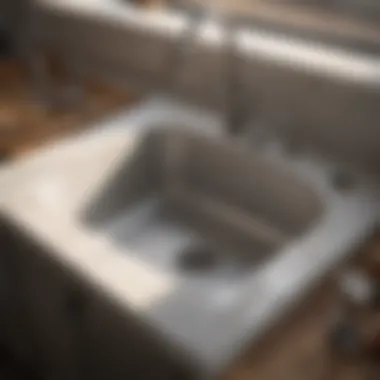
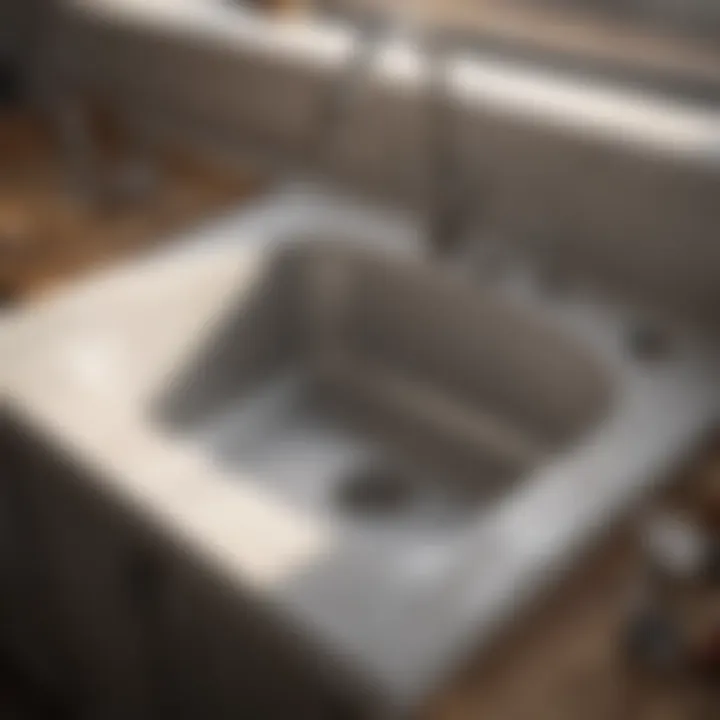
Overview of Topic
Installing a sink disposal is a relevant subject in the home improvement industry today. This appliance provides homeowners with a convenient way to manage kitchen waste efficiently and hygienically. Typically located under the kitchen sink, a disposal unit grinds food scraps, allowing them to be safely washed away through the plumbing. This not only helps reduce waste in landfills but also minimizes odors and pests attracted by leftover food.
The importance of installing a sink disposal goes beyond convenience. First, it enhances overall kitchen hygiene by ensuring that food waste is not left to rot in trash cans. Second, the device contributes to kitchen functionality, allowing homeowners to spend less time managing waste. With more people opting for sustainable living, a sink disposal also fits well into ecological goals by reducing food waste that would otherwise be sent to landfills. Properly installed, it adds value to a home's kitchen while making daily chores easier and cleaner.
Common Challenges and Solutions
Like many home improvement tasks, installing a sink disposal comes with its own set of challenges. Homeowners often face common issues such as inadequate space under the sink, plumbing misalignments, and electrical connections that seem overwhelming.
- Insufficient Space: Many kitchens, especially those designed for small apartments, can pose space constraints. Measure beneath the sink beforehand to ensure a fit.
- Plumbing Alignments: Misalignments can cause leaks, which can be tricky to rectify. Using adjustable wrenches can help in making needed adjustments.
- Electrical Connections: If your installation requires electrical work, the lack of experience can make it daunting. In such cases, consult with an electrician or read your local code regulations.
Solutions for these problems typically require some planning and organization. Always read the manufacturer's installation guide carefully. Research и some DIY tips and community insights using resources like reddit.com for real-life experiences and solutions to common issues.
Product Recommendations
When it comes to selecting the right sink disposal, there are several titan names in the market that stand out. Specifically, InSinkErator, Waste King, and Moen offer dependable models. Here is a detailed analysis of their recommended prducts:
- InSinkErator Evolution Compact: This model excels in noise reduction and efficiency. It has a high-speed motor that processes waste efficiently. Additionally, it features multiGrind technology applicable for tougher food items.
- Waste King L-8000: Known for its power, this unit contains a 1-horsepower motor and a long warranty. Waste King's design is built for durability.
- Moen GX50C: Key features include reverse grind action and an efficient motor. While it may not handle tougher waste effortlessly, it remains budget-friendly.
Each unit discussed offers various features, such as noise reduction, durability, and warranty options from trusted brands. Make the final choice based on kitchen needs and waste processing requirements.
Step-by-Step Guides
For the successful installation of a sink disposal unit, following a structured approach is essential. Below are practical steps you can undertake:
- Shutdown Power Supply: Disconnect the power to your sink disposal unit to safeguard against mishaps.
- Prepare the Area: Clear under the sink. Ensure you have all tools necessary prior to installation, including screwdrivers, wrenches, and plumbers tape.
- Attach the Mounting Collar: Secure the collar of the new disposal unit to the sink flange using screws or provided clamps as directed in the installation manual.
- Connect Drain Lines: Align the discharge drain line to existing plumbing. Ensure it slopes correctly to facilitate wastewater movement.
- Connect the Power Supply: Follow wiring instructions precisely. Usually, color coding indicates where each wire corresponds.
- Check for Leaks: Once everything is connected, conduct preliminary tests by running water through the unit and check for leaks immediately after.
By following these steps, homeowners can smoothly navigate the installation process, ensuring a functional and safe setup. Should issues arise, consulting community forums at facebook.com or other resources may offer additional insight.
Overall, understanding the importance, challenges, and solutions around sink disposal installations aids in making optimal decisions. Thorough preparation before diving into installation minimizes setbacks, engenders a smoother experience, and ultimately, enhances homeowner satisfaction.
Prologue to Sink Disposals
Understanding sink disposals is crucial when considering installation. They are widely used in modern kitchens to facilitate quick waste management and promote cleanliness. These units help reduce food scraps going to landfills, thus potentially benefiting the environment. Moreover, sink disposals contribute to convenience in meal preparation and clean-up processes. With proper installation and maintenance, a sink disposal improves kitchen efficiency, making it an essential piece of equipment.
Understanding the Purpose of Sink Disposals
Sink disposals serve a critical function by breaking down food waste into smaller pieces. This process allows waste to be flushed safely down the plumbing system. Therefore, it not only helps to prevent clogging in pipes but also reduces unpleasant odors that are often associated with food remnants left on surfaces. Kitchen hygiene sees vast improvement, particularly in homes frequenting cooking activities, making waste management easier and enhancing overall living environments. Understanding this purpose drives how one installs and maintains the unit effectively.
Common Types of Sink Disposals
In customizing your kitchen to suit specific needs, knowing the types of sink disposals ows homeowners to make an informed choice. The most common varieties include continuous feed disposals and batch feed disposals. Each operates distinctly and offers unique advantages.
Continuous Feed Disposals
Continuous feed disposals are among the most popular choices for households. They allow users to operate the disposal as they need, providing convenience. Users can keep the unit running while grinding food scraps, leading to continuous consumption of waste during cooking and cleaning tasks. A key characteristic of this type is the ease with which large quantities of waste can be processed without significant downtime.
Advantages of continuous feed disposals include their capability to deal with a larger volume of waste in real-time. This characteristic also fosters less food waste accumulation in the kitchen. However, they must always be connected to power while in use, meaning care is necessary to avoid accidents, as any part of the unit remains energized during operation.
Batch Feed Disposals
Batch feed disposals work fundamentally different from continuous models. To operate this type, the user must load waste into the disposal and then cover it with a special lid before activating the unit. This ensures that waste is processed in batches, providing a closed-off method of zeroing on food scraps.
The key advantage of batch feed disposals lies in their safety. Since they only operate when the lid is in place, there is a reduced chance of accidents or injuries associated with unexpected activation. Many homeowners prefer these models for homes where safety ranks highly in the kitchen, particularly with children present. However, they can take longer to process food waste as each use involves a start-and-stop process.
Understanding the differences between these disposal units ensures you select the right type for your kitchen needs.
Preparing for Installation
Preparing for the installation of a sink disposal is a crucial step that cannot be overlooked. Proper preparation ensures a smoother installation process and reduces the likelihood of complications later. That can lead to better efficacy and reliability of the sink disposal in the long run. Potential challenges during install can be irritating and time-consuming, so being prepared saves valuable time.
Gathering Necessary Tools
Before taking on an installation project, it is very important to have all the necessary tools ready. This simple but fundamental step can make a big difference.
Basic Hand Tools
Basic hand tools like screwdrivers and wrenches are essentials for sink disposal installation. A key characteristic of these tools is that they are user-friendly, requiring no special skills to operate. A popular choice among many DIY enthusiasts, these tools are versatile and ideal for several installation tasks.
A unique feature of basic hand tools is their availability. They can be found in most households or easily sourced at a local hardware store. Their advantages among homeowners include lower cost compared to specialized tools, but they can also be limited in functionality for more complex jobs.
Electrical Tools


When dealing with electrical connections, electrical tools come into play. Basic voltage testers and wire strippers are some of the crucial electrical tools for ensuring safety and straightforward connections. The key characteristic here is the focus on safety against electric shock, which is very important in any home repair project involving electrical components.
These tools are favored in this guide for their role in ensuring reliable connections while mitigating risks. However, a disadvantage worth noting is the potential complexity some may have, which may be intimidating for beginners.
Plumbing Tools
Plumbing tools like plumbers' wrenches are essential when connecting the disposal to the plumbing system. These tools are known for their power to handle challenging plumbing tasks. Their heavy-duty nature distinguishes them, making them an advantageous choice for anyone wanting to undertake this project.
The unique feature of plumbing tools is that they are built fundamentally for water tightness and durability, shielding against leaks. While often seen as complicated tools, they can be learned easily and be immensely helpful for domestic installs.
Purchasing the Right Type of Disposal
Choosing the right sink disposal is a major aspect before moving onto installation. It helps in making sure that the unit will fit well with home use and that it can operate efficiently under normal conditions.
Capacity Considerations
Capacity considerations concern the volume of waste a disposal can handle. This is important because households with larger food waste generation need a more productive disposal system. A disposal's capacity indicates whether it will be efficient under constant use. Units come in various sizes and capabilities, which caters to differing household needs.
Larger capacity can reduce the frequency of emptying, leading to greater convenience.
Manufacturer Recommendations
Looking into manufacturer recommendations tends to yield positive outcomes during installations. Taking heed of instructions is advised because each model serves particular characteristics and limitations. A manufacturer may recommend specific connections, compatibility with certain pipes, or maintenance procedures.
Understanding these aspects can play a key part in guaranteeing that the disposal unit serves best under your particular requirements. Following recommendations can minimize issues that might arise after the installation.
Assessing Your Current Sink Setup
Assessing your current sink setup provides insights into what needs to be done for a successful installation. This means being aware of your existing plumbing system, electrical arrangements, and whether there are any constraints that could hinder proper installation.
Taking time to analyze is essential here. Find out if relevant pipes and wires are disconnected before proceeding. This can often save surprises and setbacks down the road. Ensuring readiness in the physical setup guarantees an easier transition to fitting in a new sink disposal.
Safety Precautions
Ensuring safety prior to and during the installation of a sink disposal cannot be overstated. Improper handling can lead to accidents, electrical hazards, or even serious injury. Paying careful attention to safety measures creates a safer working environment. This allows you to proceed smoothly throughout the installation process.
One critical aspect involves managing electrical power. Misreading or neglecting power settings can invite dangerous situations, including electrical shocks or fires. In addition, the presence of adequate ventilation prevents buildup of potentially harmful gases, promoting a safe atmosphere.
Careful observance of safety precautions helps safeguard both the installer and the household. Following these guidelines results in positive outcomes, ensuring that the installation process is both efficient and risk-free.
Cutting Off Power Supply
Before beginning your work, cutting off the power supply is essential. Start by locating the circuit breaker, which also ensures that only the disposal unit does not receive electrical current. It is advisable to label the circuit if not already done; this reduces confusion later on.
Using a Digital Multimeter confirms that the power source is effectively disconnected.
Steps to consider:
- Locate the circuit breaker specific for the disposal.
- Turn off the breaker, ensuring the label is correct.
- Double-check using a multimeter before touching any electrical connectors.
Only resume the work after confirming the absence of power. Power management diminishes risk significantly.
Ensuring Proper Ventilation
Good ventilation before and during the disposal installation is another crucial phase. It limits the chances of gas accumulation, which can be a byproduct in some instances. Ensuring a gentle breeze or mechanical air movement avoids inhaling harmful fumes such as methane.
Evaluate local ventilation situations, and if necessary:
- Open windows: This will promote airflow.
- Use fans: Set them in the right directions to support ongoing air exchange.
- Wear a respirator: Particularly if it’s damp or odors are noticeable. Employ units designed for home use.
Adequate ventilation leads to comfort as you work. A well-ventilated environment reduces health risks significantly during the removal and installation of the disposal.
Safety is non-negotiable. Attention to specifics in safety precautions ensures one’s achievement of desired results without complicating the process.
Step-by-Step Installation Process
The step-by-step installation process is critical in ensuring that your sink disposal operates effectively. By following a structured approach, you can avoid errors that may cause functionality issues later. Each phase guarantees that every component is handled correctly, minimizing future problems. Moreover, attentiveness during installation fosters safety and helps in identifying potential complications before they escalate.
Removing the Old Disposal Unit
Disconnecting the Power Cord
Before proceeding with the removal, disconnecting the power cord is essential for safety. It prevents accidental activation and electrical hazards during the process. The key characteristic of this step lies in ensuring the device is completely offline prior to any tampering. This step is beneficial as it safeguards against electrocution.
The unique feature of disconnecting the power includes the use of specific switch controls or unplugging. Ulitmately, this clear separation from power limits risks significantly in this task, reinforcing it as a must-follow protocol.
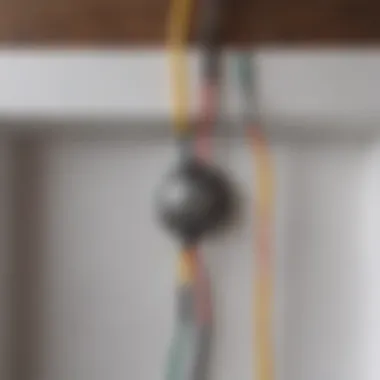

Unscrewing the Disposal
Unscrewing the disposal connects directly to removing the old unit. The characteristic of ease adds to the importance of this step. With proper tools like a socket wrench, getting the unit out becomes accessible.
One primary advantage of this method is the ability to reuse existing plumbing connections if needed. By loosening each screw, you prepare not only the removal but also ensure that the area will be ready for the new unit installation. However, caution is required here as damaged screws might complicate future repurposing of those connections.
Removing Any Attachments
Removing any attachments such as drain pipes or undersink mounts finalizes the old disposal's disconnection. This task is foundational and critical to avoid clogging when the new disposal is installed. The important feature of this step is identifying each connection and component so nothing crucial is forgotten.
The advantage of doing this methodically means reducing unnecessary delays in fitting the new disposal. Nevertheless, forgeting one or two connections can lead to leaks post-installation, so encompassing thoroughness here is paramount.
Preparing the New Disposal Unit
Installing the Mounting Assembly
Installing the mounting assembly is the cornerstone of your disposal setup. While seemingly straightforward, it ensures that the disposal unit will be secured to the sink. The significance lies in its stability against movement and vibration. Additionally, ensuring a robust connection means less noise and hassle post-installation.
The advantage of having this sturdy groundwork is that it allows for the proper fixture of your disposal, leading to enhanced performance. The disadvantage often concerns adjustments needed once mounted; many persoas prefer flexibility now yet may face restrictions later if not aligned properly.
Connecting the Drain Pipe
Connecting the drain pipe follows the mounting assembly as an equally crucial action. It forms the link between the disposal and your sink's plumbing system. The key characteristic here is ensuring the pipes align properly to avoid blocks or leaks.
The benefit of this step becomes apparent as it directly influences the efficient flow of waste. A strong connection leads to effective grinding and smooth operational flow. One disadvantage, however, with misalignment could mean costly issues that require later readjustment.
Installing the New Disposal Unit
Securing the Unit in Place
Securing the unit in place locks everything together flawlessly. The primary contribution of this pivotal action is safety and functionality, creating a solid structure. Without proper securing, even the best units may wiggle, causing strain or damage.
This task is well-regarded as it also aids stability at operating speed. Nevertheless, overtightening changes the integrity of plumbing connections, which could have long-term disadvantages.
Connecting to the Power Supply
Connecting to the power supply completes the mechanical setup of the disposal. The critical attention here must relate to following standards and exposing wires securely. This crucial link ensures that when power is applied, the disposal performs as intended.
One significant advantage in handling this interface carefully is the direct link to reliable performance. The downside can emerge from mishaps during this critical moment; if not volts checked properly, problems may arise affecting usage safety and reliability.
Finalizing the Installation
Testing for Leaks
Testing for leaks marks an essential final routine step. The purpose behind this beautiful alignment at the conclusion checks each connection carefully leads to preventative measure considerations. An overlooked leak can threaten your cabinets and create further expenses.
The vital nature of this stage provides peace of mind for every user. Should leaks arise identifying where becomes necessary easily. Unfortunately, neglecting testing might lead to remodels down the road making this a powerful suggestion overall.
Conducting a Functional Check
Conducting a functional check rounds up the installation process definitive completion. This key characteristic entails engaging elements surrounding the disposal letting you verify that every aspect mends properly working. This competence puts everyone assured! Usage should encompass sound frequencies on powering more or less high-range.
The favorable outcomes can direct towards continuous operational readiness as the system overall retention assists long-term maintenance pre-planning strategies! Of course an install attempting lucky hang loose routing is less appealing while pressinst on every button precaution exists! Miscalculations may later deliberate dishoverance leaning unnecessary dispositional emissions possibly hindering appliance through checksaroo!
Thorough testing assures reliability and efficiency are maintained while using the newly installed disposal.
Post-Installation Checks
Once the sink disposal is installed, it is essential to conduct a series of post-installation checks. This stage is crucial to ensure that the unit functions correctly and safely. Neglecting this step could lead to operational failures or hazardous situations, which are best avoided.
Essential checks serve multiple purposes. Firstly, they help confirm that all connections are intact and functional, which directly correlates to the performance of your disposal unit. Secondly, these checks provide an opportunity to catch any potential issues early. It is much easier and more cost-effective to address a problem immediately, rather than waiting for it to escalate over time.
Confirming Power Supply Connection
The first step in post-installation checks involves confirming the power supply connection. After the new unit is securely installed, verify that the power cord is properly plugged into the outlet and that the circuit breaker is closed. You will also want to ensure that any switches that control the disposal are in the correct position. Failing to establish an effective power supply can prevent the unit from being functional.
Here's how to accurately check the power supply:
- View Indicator Lights: Many disposal units have indicator lights that show their operational state.
- Use a Voltage Tester: This tool can confirm whether the supply voltage is flowing through the cord. It helps to determine if it is functioning well or if there is a problem.
- Switch Functionality: Check any wall switches associated with the unit.
Once these confirmations are done, chances of electrical issues should be minimal.
Understanding Running Procedures
After ensuring that the power supply is connected properly, understanding the running procedures for your disposal is crucial. Each model may significantly differ, meaning the operations can include a variety of steps beyond simply turning it on. Knowing how to run your new unit will aid in maintaining it effectively and safely.
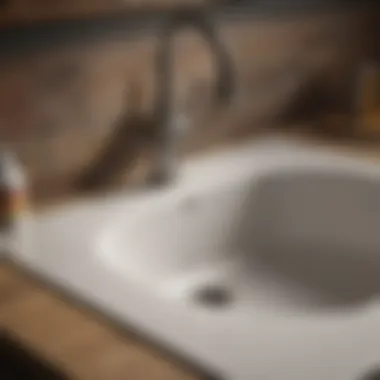
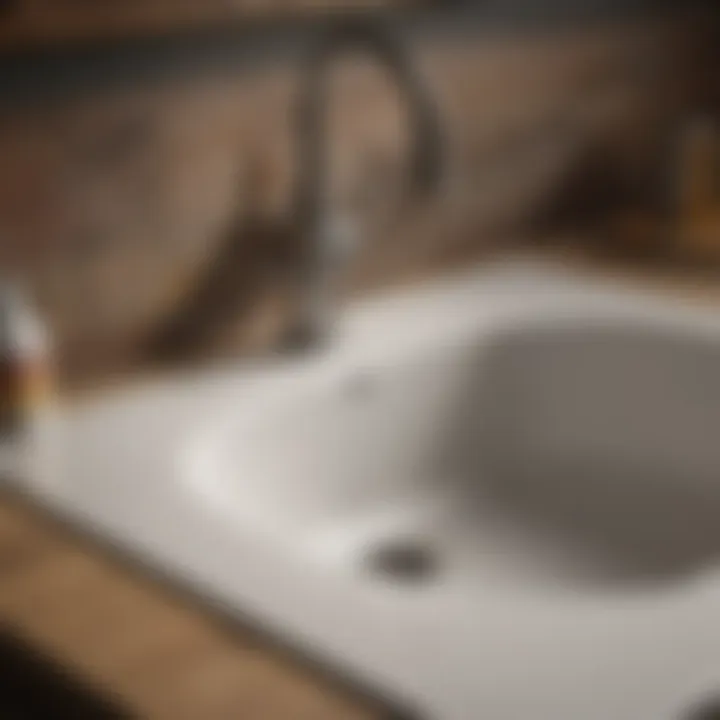
Here are key procedures to follow when operating your disposal:
- Start at Cool Temperatures: Begin by running cold water through the sink basin before starting the disposal. This helps solidly grind food while preventing blade jams.
- Gradually Introduce Food Waste: Avoid overloading by gradually feeding small amounts of waste into the unit. Large chunks can lead to blockage issues.
- Run Fluids After Use: It is beneficial to run cold water for several seconds after switching the disposal off. Doing so flushes any remaining grindings down the drain.
- Say No to Non-Disposables: Always remember what is safe to process through your disposal and what is not, in order to prevent damages and expensive repairs.
Post-installation checks play an integral role in maximizing the lifespan and effectiveness of your sink disposal.
Following these checks allows homeowners to not only enjoy their modern convenience but also ensure safety in the kitchen.
Troubleshooting Common Issues
When installing a sink disposal, understanding how to troubleshoot common issues is vital. This section aims to identify typical problems you may encounter after installation. Knowing these aspects allows you to act swiftly and avoid prolonged disruption to your kitchen routine.
Disposal Not Turning On
One of the most frequent complications with a sink disposal is it not turning on. If this happens, first verify that the power supply is properly connected. Make sure that the disposal is plugged in, and examine the reset button at the bottom of the unit. Sometimes, when the unit is overloaded, it can trip this button. If the disposal was recently overloaded or jammed, relieving that stress and then pressing the reset button might solve the issue.
Another key point is to check if the circuit breaker has tripped or if a fuse has blown on the circuit in use. It is also beneficial to ensure any wall switches controlling the disposal are functioning. Remember, electricity and water combined make for hazardous situations, so if you’re uncertain about power issues, consider consulting with an electrician.
Unusual Noises During Operation
An operational sink disposal should operate smoothly and quietly. Unusual noises can indicate potential issues needing prompt attention. If you hear rattling or scraping sounds, it is possible that something larger than intended is caught within the grinding components. Check for foreign objects like utensils or food containers that might have made their way into the unit. It often helps to manually see if there is anything obstructing the blades by using a wrench to turn the flywheel.
Additionally, if you hear humming without grinding, this often indicates the motor is running but its blades cannot turn—this can usually be fixed by addressing whatever the blockage is.
Consulting with the disposal's user manual can also provide insights as different models may have unique characteristics and troubleshooting guides.
Leaks Around Connections
Leaks pose a significant issue when it comes to plumbing, particularly with a sink disposal. Significantly, leaks usually occur at the the connections between the disposal and the sink or the drain pipe. Start troubleshooting by being thorough. Inspect each connection to find the source of the seepage.
If the leak arises within the mounting assembly, use a wrench to tighten fixtures, as loose connections can often be the culprit. Make sure to not over-tighten, as that can lead to further issues.
If any rubber seals or gaskets appear worn or damaged, it’s wise to replace those to ensure a better seal. Remember to monitor the disposal after further adjustments. Subsequently, regular checks can help minimize larger plumbing problems.
Maintenance of Your Sink Disposal
Maintaining your sink disposal is crucial for its long-term efficiency and reliability. Regular maintenance can prevent common issues like clogs, odors, and mechanical malfunctions. A well-maintained disposal unit will not only operate better but will also last longer, saving you money on repairs and replacements.
One of the leading causes of disposal failure is a lack of cleaning. Food particles can build up within the unit and pipes, leading to foul smells and reduced functionality. Regular checkups and cleaning not only keep the disposal unit effective but also contribute to a healthier kitchen environment.
Regular Cleaning Recommendations
Keeping your sink disposal clean is integral to its average lifespan. The process doesn't have to be complicated. Here are some simple yet effective strategies:
- Daily Rinsing: After use, always ensure running cold water for at least 30 seconds while the unit is turned on. This helps wash away small particles.
- Monthly Deep Cleaning: To eliminate odors, consider grinding citrus peels or ice cubes along with rock salt monthly. The citric acid cleans, while ice helps dislodge grime.
- Baking Soda and Vinegar Mix: This can be used for a deeper clean. Pour half a cup of baking soda into the disposal and followed immediately by half a cup of vinegar. Wait for 15 minutes before flushing it with very hot water.
Regularly using these methods can result in a noticeable improvement in your disposal's efficiency.
Understanding What Can and Cannot Be Disposed
It is vital to understand what can be safely disposed of in your unit. While a garbage disposal can handle certain food waste, improper items can lead to jams or damaged components.
Acceptable Materials
- Soft Food Scraps: Fruits and vegetables are generally fine. Small pieces can go through.
- Grains: Cooked rice and oats are capable of being processed by a disposal.
- Eggshells: A minimal quantity can provide a slight cleaning effect, albeit not a method you should overdo.
Items to Avoid
- Fibrous Vegetables: Items like celery, corn husks, and artichokes can tangle inside the system.
- Starchy Foods: Potatoes and similar highly starchy foods can cause binding.
- Grease and Oil: These can solidify in pipes and cause clogs.
- Non-food Items: Plastics, paper, and metallic objects should never enter the disposal unit.
Knowing what is safe to put in your sink disposal contributes significantly to extending its lifespan and preventing issues that frustrate users.
By practicing good maintenance habits, housewives and homeowners can enjoy a smoothly functioning kitchen disposal without frequent repairs.
Epilogue
The conclusion captures the essence of this guide. It reiterates the key aspects that a person needs to remember about the installation of a sink disposal. With the importance of proper installation and maintenance emphasized, homeowners can benefit significantly from the knowledge provided in the preceding sections.
Installing a sink disposal is not just a project for the sake of convenience. It vastly improves kitchen sanitation, making waste handling more efficient. With the rise in awareness about environmentally friendly practices, using a disposal can help lessen the burden on landfills by breaking down food waste effectively. By following the guidance on preparation, installation, and maintenance, one ensures that the disposal it works smoothly and continues to serve its purpose well.
Recap of Key Points
- Preparation: Gather essential tools and assess the existing sink setup. Research the best type of disposal tailored to your needs.
- Safety Measures: Always ensure power is cut off during installation. Proper ventilation is also critical for effective operations.
- Step-by-step Installation: Carefully follow the detailed steps provided for installing, from removing the old unit to testing for leaks post-installation.
- Post-Installation Check: Confirm power supply connection matters. Understanding how to run the disposal properly enhances its lifespan.
- Maintenance: Engage regularly with removing debris and clarifying what should not be put down the disposal to avoid future issues.
Encouragement for Proper Disposal Use
Proper use of sink disposals is vital for ensure longevity and sustainability. Knowing what can and cannot be disposed helps keep the unit functioning and avoids costly repairs. Proper operating methods include running cold water while the disposal is active. This maintains solid waste movement while cooling the unit.
By adopting best practices, individuals contribute to not just household cleanliness but also broader environmental sustainability. The powerful ability of disposals to manage food waste can result in a more environmentally friendly home. Emphasizing responsible use and maintenance is essential in fostering this benefit, thus encouraging everyone to be mindful.
A well-maintained sink disposal not only streamlines kitchen workflows but actively participates in waste reduction efforts, making it a valuable addition to any household.







